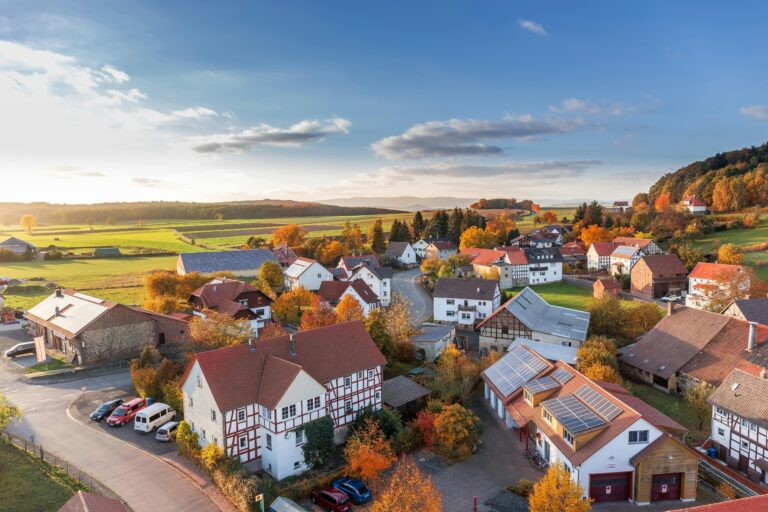
The U.S. housing market delivered encouraging news in July 2025, with existing home sales posting a modest but significant increase that offered hope for continued market recovery. According to data from the National Association of Realtors and federal agencies, the residential real estate sector showed signs of stabilization after months of subdued activity, driven by gradually improving market conditions and renewed buyer confidence.
Sales Volume Shows Positive Movement
Existing home sales rose 2.0% month-on-month to 4.01 million units (annualized) in July, coming in above expectations for a slight decline to 3.91 million. Existing Home Sales in the United States increased to 4.01 million in July from 3.93 million in June of 2025. This improvement represented the first meaningful uptick in several months and exceeded analyst expectations, suggesting that market conditions may be turning a corner.
The existing home sales figure of 4.01 million units on a seasonally adjusted annual basis marked a welcome change from the sluggish pace that had characterized much of 2024 and early 2025. While still below historical peaks, the increase demonstrated that buyer activity was responding to evolving market conditions.
Sales of new single-family houses in July 2025 were at a seasonally-adjusted annual rate of 0.652 million, according to estimates released jointly today by the U.S. Census Bureau and the Department of Housing and Urban Development. This is 0.6 percent below the June figure, showing that while existing home sales improved, new home sales remained relatively flat with a slight decline.
Inventory and Market Balance Improvements
One of the most encouraging aspects of July’s market performance was the improvement in housing inventory levels. The inventory of unsold existing homes increased 0.6 percent from the previous month to 1.55 million at the end of July, or the equivalent of 4.6 months’ supply at the current monthly sales pace. That’s a healthy 15.7 percent increase from a year ago.
This inventory increase provided buyers with more options and helped reduce the intense competition that had characterized the market during peak demand periods. The 4.6 months’ supply represented a more balanced market condition, moving away from the severe inventory shortages that had driven rapid price appreciation in previous years.
While buyers are gaining bargaining power, the market remained competitive in many regions, though the dynamics were clearly shifting toward a more balanced environment between buyers and sellers.
Price Trends and Affordability Factors
Housing price trends in July reflected the more balanced market conditions. In July 2025, 29.0% of homes in the U.S. sold above list price, down 4.2 points year over year. There were only 21.8% of homes that had price drops, up from 18.0% of homes in July last year. There was a 99.0% sale-to-list price, down 0.58 points year over year.
These pricing dynamics indicated a market that was cooling from the frenzied activity of previous years while maintaining overall price stability. The decrease in homes selling above list price and the increase in price drops suggested that buyers were gaining some negotiating leverage, though the market remained generally favorable to sellers.
The median sales price for existing homes increased 50% between 2019 and 2024, from $271,900 to $407,600, according to the National Association of Realtors. This dramatic price appreciation over five years created significant affordability challenges that continued to influence market dynamics in 2025.
Mortgage Rate Environment
The mortgage rate environment remained a critical factor influencing market activity. As of July 26, 2025, mortgage and refinance rates reflect a period of relative stability but remain elevated compared to previous decades. The forecast for mortgage rates is clouded by policy uncertainty, but the general consensus is that the 30-year fixed rate will stay between 6.5% and 7%, according to a U.S. News analysis of economists’ mortgage rate projections.
“Our forecast is for rates to stay close to the 6.6% range, at least through the end of the year,” he said. But the Federal Reserve Board meets in mid-September for a vote on whether to lower interest rates, which can influence mortgage rates. This rate environment, while elevated compared to the ultra-low rates of 2020-2021, showed signs of stabilization that allowed some buyers to make purchasing decisions with greater confidence.
The National Association of REALTORS® forecasts mortgage rates to stabilize near 6% in 2025, likely establishing a new normal. At this rate, more buyers are expected to come back to the market, boosting activity.
Market Activity and Buyer Behavior
The July sales increase reflected changing buyer behavior as market participants adapted to the new interest rate environment. Over the summer, rates have come down and purchase applications are outpacing 2024, though a number of homebuyers continue waiting on the sideline for rates to further decrease.
This pattern suggested that while some buyers were returning to the market as conditions stabilized, others remained cautious, waiting for more favorable financing conditions. The increase in purchase applications outpacing 2024 levels indicated growing buyer confidence despite elevated rates compared to recent historical lows.
The “locked-in” effect of homeowners feeling stuck-in-place with 2% or 3% mortgage rates from recent years will lessen over time, Yun said. Yun pointed to the 3.5 million new babies being born each year as well as the 1.5 million marriages, 700,000 divorces, 3.5 million people as demographic factors that would continue to drive housing demand regardless of rate conditions.
Price Growth Expectations and Market Outlook
Looking ahead, industry experts maintained cautious optimism about market conditions. NAR predicts that, on a national basis, home prices will rise modestly—by about 1% in 2025—before more significant changes occur. This modest price growth prediction reflected the market’s transition from the rapid appreciation of previous years to a more sustainable pace.
NAR forecasts existing-home sales to rise by 6% in 2025. While the Realtor.com forecast suggests sales might land at 4 million, just behind 2024’s long-term low, this still points to a market that isn’t actively declining.
Regional Variations and Market Dynamics
Sales increased in both the single-family and other property segments, indicating broad-based improvement rather than isolated gains in specific market segments. This suggested that the July increase reflected genuine market improvement rather than temporary fluctuations in particular property types or geographic areas.
Affordability will remain a concern for many, particularly in high-demand markets. Regional variations continued to play a significant role in market performance, with high-cost coastal markets facing greater affordability challenges than more moderately priced inland areas.
Construction and Supply Factors
The construction sector’s performance remained a crucial factor in overall market health. New home sales data showed mixed results, with the slight decline in July reflecting ongoing challenges in the construction industry, including labor shortages, material costs, and regulatory constraints that continued to limit new supply.
The relationship between existing home sales increases and new construction performance highlighted the market’s dependence on existing inventory to meet buyer demand. This dynamic suggested that sustained market recovery would require both continued existing home sales activity and improved new construction delivery.
Economic Context and Future Implications
The July sales increase occurred against a backdrop of broader economic uncertainty, with inflation concerns, employment conditions, and Federal Reserve policy all influencing housing market dynamics. “You certainly have the expectation that if the Fed adjusts policy, it could further influence mortgage rates and housing market activity.
Industry analysts viewed the July improvement as a positive sign while acknowledging that sustained recovery would depend on multiple factors, including interest rate trends, economic stability, and continued inventory improvements.

Conclusion
July 2025’s home sales increase represented a meaningful step toward market stabilization, with existing home sales rising 2.0% month-over-month to reach 4.01 million units annually. While new home sales remained essentially flat, the improvement in existing home activity, combined with increased inventory levels and stabilizing mortgage rates, suggested that the housing market was finding its footing after a challenging adjustment period.
The data revealed a market in transition, moving away from the extreme conditions of recent years toward more balanced dynamics between buyers and sellers. With inventory increasing, price appreciation moderating, and buyer activity showing signs of recovery, July’s performance offered cautious optimism for continued market improvement through the remainder of 2025.
However, challenges remained, particularly regarding affordability constraints and the ongoing impact of elevated mortgage rates compared to recent historical lows. The market’s future trajectory would continue to depend on broader economic conditions, Federal Reserve policy decisions, and the housing industry’s ability to increase supply to meet underlying demand from demographic factors and household formation trends.





